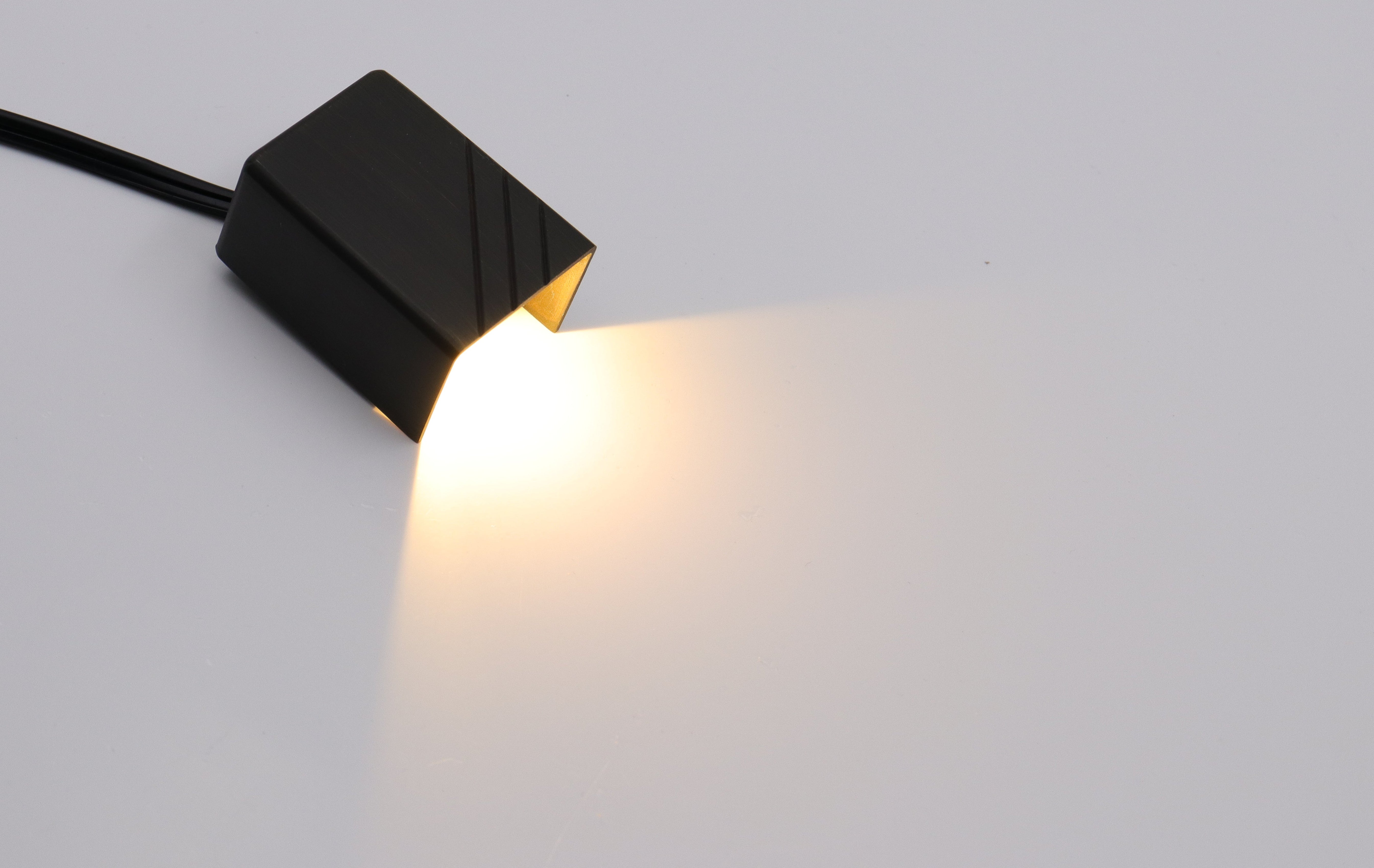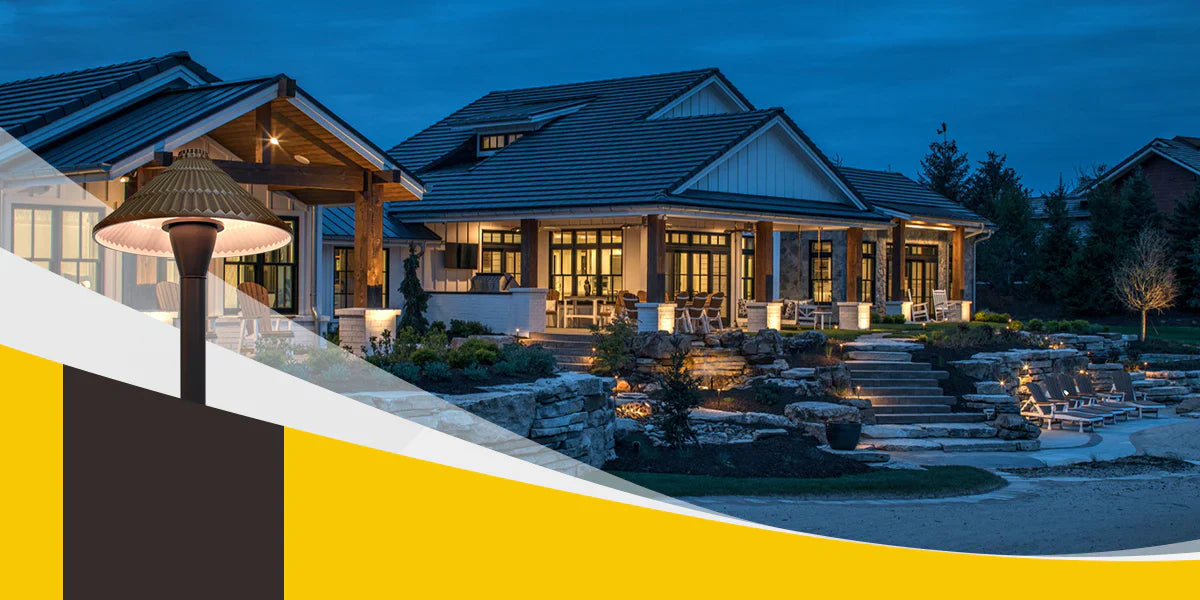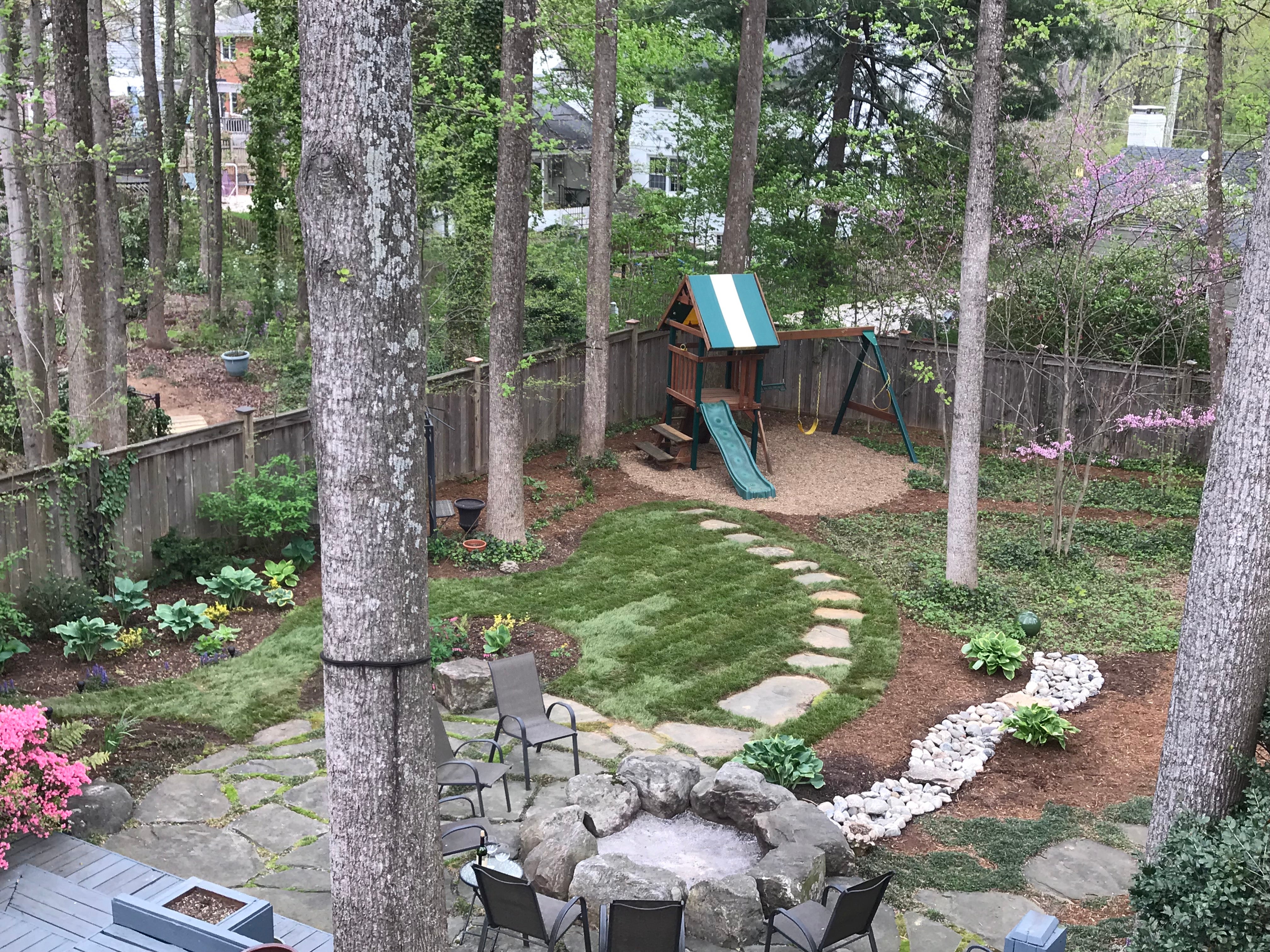Quick Answer
Yes, flood lights can definitely be both bright and eco-friendly. By using LED bulbs that use less energy, adding motion sensors to only turn on when needed, and setting them up to point downward to reduce light pollution, we can keep areas well-lit without harming the environment.
Introduction
When we flip the switch on our outdoor lights, we rarely consider the ripple effects of that bright beam cutting through the night. Yet, the glow we rely on for security and visibility comes with a cost to the skies above and the world around us. This deep dive into eco-friendly lighting peels back the layers of light pollution, showing how our well-intentioned floodlights can unintentionally harm wildlife and disrupt our natural rhythms. As we explore smarter lighting designs and strategies, we'll learn how to illuminate our spaces thoughtfully, ensuring that our need for light leaves the stars in the night sky shining for generations to come.
What Is Light Pollution and Its Impact?
Light pollution is the excessive or misdirected artificial light that disrupts natural darkness in the environment. It's an overlooked pollutant that dulls the night sky and disrupts ecosystems. Here are its main types:
- Glare: This is the harsh brightness from poorly directed lights that make it difficult to see. Imagine driving at night and being blinded by oncoming headlights; that's glare. It's not only a nuisance but can be dangerous, causing accidents by impairing vision.
- Skyglow: This refers to the luminous halo that hangs over towns and cities. It's caused by light escaping into the sky and scattering in the atmosphere, which obscures our view of the cosmos. Skyglow affects astronomers' ability to observe celestial objects and diminishes everyone's ability to enjoy the beauty of the night sky.
- Light Trespass: When light invades spaces where it's not intended or needed, that's light trespass. If you've ever had a streetlight beam into your room, interfering with your sleep, you've experienced light trespass. It's intrusive and can disrupt individuals' sleep patterns and overall well-being.
- Clutter: An excessive group of lights, especially in urban areas, creates visual noise and confusion. Clutter can lead to an overwhelming and disorienting experience, making it hard for people and animals to navigate their surroundings.
The ecological ramifications are significant-light pollution can alter migratory patterns, feeding behaviors, and even the reproductive cycles of wildlife. Sea turtles, as mentioned, can wander toward artificial lighting instead of the moonlit ocean, decreasing their odds of survival. Insects swarm around lights, becoming easy prey and disrupting food chains and pollination processes.
For humans, the blue-rich light emitted by many modern LEDs is particularly disruptive at night. It interferes with the production of melatonin, the hormone responsible for regulating sleep. Chronic exposure to such light may increase the risks for sleep disorders, depression, obesity, and even certain types of cancer due to circadian rhythm disruption.

How Are Flood Lights Evolving Toward Sustainability?
Flood lights are at the cutting edge of sustainable lighting, brightening our surroundings while also treading lightly on the environment. Engineers are focusing more than ever on designs that limit light pollution and conserve energy.
Embracing Full Cutoff Designs
Modern floodlights now often feature full cutoff fixtures. These smart designs channel light downward to where it's needed most, preventing the light from spilling upward and contributing to skyglow. By concentrating the light, these fixtures ensure that every lumen is used efficiently and responsibly.
Motion Sensors: Lighting on Demand
Another innovation in eco-friendly flood lighting comes with motion sensors. These sensors act as vigilant guards, only awakening the lights when presence is detected. This not only conserves energy but also minimizes the impact on nocturnal wildlife, allowing animals to exist undisturbed by constant artificial light.
The LED Revolution in Flood Lighting
Taking center stage in this green transformation are LEDs, known for their energy efficiency and longevity. These versatile bulbs are pivotal in reducing overall energy consumption and can be fine-tuned to emit warmer colors, which are less likely to disrupt wildlife patterns and human sleep cycles.For guidance on choosing the right LED bulbs, explore "Selecting the Perfect LED Bulbs with COLOER".
What Makes Flood Lights So Versatile?
Flood lights are not just about brightening an area; they serve a multitude of purposes that go beyond mere illumination. The adaptability of these lights has made them a popular choice across different settings, serving varied roles from ensuring security to enhancing architectural features.
A Light for All Scenes
Whether it's casting a wide glow over a backyard for a family gathering or deterring potential intruders with their bright presence, flood lights are a go-to solution. Their versatility shines in providing safety and creating an ambiance that can transform the look and feel of a space.
Architectural Accents and More
In the commercial realm, flood lights take on the role of highlighting building facades and landscapes, showcasing architectural beauty and contributing to the aesthetics of urban design. At the same time, they contribute to public safety by illuminating dark alleyways and parking lots.

Adaptable to Nature's Canvas
Even in natural environments, carefully placed flood lights can enhance visibility without disrupting the local wildlife when used responsibly. They can light up trails and parks, making nighttime navigation safer while still respecting the delicate balance of nocturnal ecosystems.
The same flood light product can thus illuminate a home's driveway, accentuate the elegant lines of a modern skyscraper, or gently light up a walking path in a nature reserve. This multifunctionality is what makes flood lights a truly indispensable component in both our built and natural environments.
What Are the Latest Innovations in Flood Lighting Technology?
Flood lights have undergone a remarkable evolution, with new advancements paving the way for more efficient and intelligent lighting solutions. These innovations not only bring brighter light where it's needed but do so with a keen eye on energy consumption and environmental footprint.
Brighter, Yet Greener
One of the most significant breakthroughs in flood lighting is the ability to produce a greater amount of light from less power. This means that modern flood lights can cast a strong beam using fewer watts, leading to lower electricity bills and a reduced impact on the environment. By leveraging LED technology, these lights consume a fraction of the energy that traditional bulbs use, while lasting much longer.
Smart Features that Shine
Modern flood lights don't just stop at saving energy; they're also becoming smarter. With dimming capabilities, they can adjust their brightness to suit different times of the day or specific needs, further conserving energy when full power isn't necessary. Timers add another layer of control, allowing lights to be programmed to turn on and off at predetermined times, ensuring they're only in use when needed.
Connectivity to home automation systems has brought flood lighting into the realm of smart homes. Through this integration, flood lights can be controlled remotely via smartphones or voice commands. This convenience doesn't just add a 'cool factor'; it also means that lighting can be managed dynamically in response to real-time conditions, such as changing weather or unexpected events, making our homes smarter and more responsive.
Thanks to these technological triumphs, flood lighting is becoming more user-friendly, adaptable, and environmentally responsible, fitting seamlessly into the lifestyles and values of the contemporary world.
How to Position Flood Lights for Optimal Lighting Efficiency
- Aim Downward: To prevent light from spilling into the sky and contributing to skyglow, always angle floodlights downward. By pointing them towards the ground, you concentrate the light on the areas you want to illuminate, like walkways or signage, making your lighting more efficient and less intrusive to the night sky.
- Use Shields: Shields, also known as baffles, are attachments that help control where your light goes. They act as guide rails for the light, ensuring that it is directed towards your area of interest rather than scattering it across the surroundings. This not only focuses the light for better visibility but also protects neighbors and wildlife from unwanted glare.
- Set Angles Carefully: Be precise with the angles at which you set up your flood lights. The aim is to have a well-lit area without the light spreading beyond what's necessary. It's about finding that sweet spot where the light is bright enough for safety and comfort, without being wasteful. Experiment with different angles to see how they affect the lit area and adjust accordingly.
- Motion Sensors: Motion sensors are a smart addition to outdoor lighting. They can drastically cut down on energy consumption by ensuring lights are used only when needed. This dynamic approach means that lighting is responsive to the presence of people or cars, providing illumination on-demand rather than running continuously through the night.
- Consider Timers: Timers give you control over lighting schedules, allowing you to sync floodlight operation with peak activity times. For instance, setting timers to activate the lights after dusk and turn them off towards bedtime can significantly reduce energy use. Timers also add a layer of security by giving the impression of occupancy even when no one is around.
How to Choose Environmentally Friendly Flood Lights
Selecting the right flood lights is not just about the immediate need for illumination; it's also about how these choices fit within a larger environmental context. Environmentally friendly flood lights are designed to provide necessary lighting while minimizing their ecological footprint.
Look for Energy-Efficient Labels
When shopping for flood lights, energy efficiency should be at the forefront of your criteria. Look for products with certifications like ENERGY STAR or other eco-friendly labels that indicate lower energy consumption without sacrificing performance. These lights often use LED technology, which is known for its low power usage and long lifespan.
Assess the Light Quality and Features
The color temperature and quality of light can affect both human well-being and wildlife habitats. Opt for lights that emit a warm-colored beam, which is less intrusive to nocturnal animals and less likely to interfere with human sleep patterns. Additionally, features such as full cutoff designs, which direct light downward and prevent upward spillage, contribute significantly to reducing skyglow.

Smart Controls for Greater Impact
Choose flood lights that come with smart controls-such as dimmers, motion sensors, timers, and connectivity to home automation systems. These controls offer the flexibility to adjust lighting according to specific needs and conditions, thus maximizing efficiency and minimizing waste.
Durability Matters
Lastly, select flood lights that are built to last. Durable lights not only reduce the frequency of replacements but also lessen the waste and environmental impact associated with manufacturing and disposal. High-quality materials and construction not only ensure longevity but also support consistent performance over time.
How Can Consumers Use Flood Lights Responsibly?
Responsible usage of flood lights is key to enjoying the benefits they offer while preserving the natural environment. Homeowners and businesses alike can adopt best practices to ensure their lighting solutions are as eco-friendly as possible.
Fine-Tuning for Conservation
Adjusting the angles of flood lights can make a substantial difference. By tilting lights downward, directly onto the area that needs illumination, you can prevent light from spilling into the skies or your neighbor's yard. This simple adjustment helps maintain a clear night sky and respects others' space.
Embracing Warm Illumination
The choice of bulb color plays a crucial role in responsible light usage. Warm-colored bulbs, which have a lower color temperature, mimic the hues of sunset and sunrise, creating a softer ambiance that is less likely to disrupt sleep patterns in humans and less attractive to insects and other wildlife.
Adaptive Controls for Smart Lighting
Using adaptive controls like dimmers can match the level of light to the time of day or situation. Motion sensors add another layer of smart usage by activating the lights only when necessary, reducing the time the lights are on and saving energy. Timers ensure that lights aren't left on inadvertently, automating conservation efforts.
Balancing Safety with Starlight
When it comes to security lighting, the goal is to deter unwelcome visitors, not the stars in the sky. This balance can be achieved by using the minimum brightness necessary for safety and pairing it with motion detectors to limit when and where light is cast. Choosing the right kind of light fixture that focuses light exactly where it's needed without contributing to light pollution is also essential.
Light Up Responsibly with Flood Lights
We've seen how flood lights are more than just bright beacons in the dark; they're a sign of how smart we're becoming about using technology responsibly. We've learned that it's possible to light up our homes and cities without washing out the night sky or harming nature. With each new eco-friendly design and thoughtful way we use lights, we're finding a better balance. The future looks bright, not just because of the lights themselves but because of how we're learning to use them-to keep our nights safe and our skies starry.






Leave a comment
All comments are moderated before being published.
This site is protected by hCaptcha and the hCaptcha Privacy Policy and Terms of Service apply.